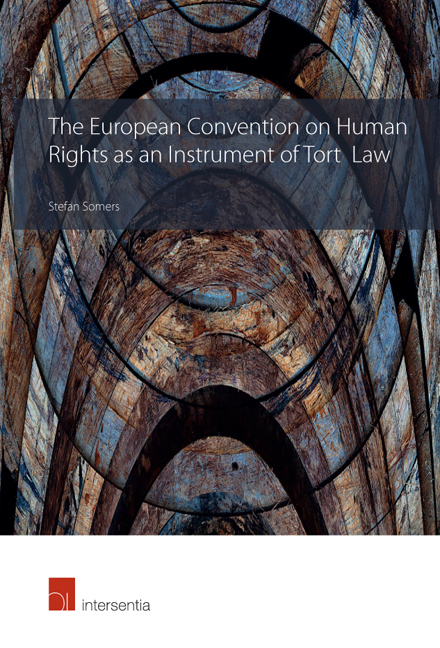Book contents
- Frontmatter
- Dedication
- Contents
- List of Cases
- Introduction
- Chapter 1 Human Rights in Horizontal Relations
- Chapter 2 Articles 13 and 41 ECHR and State Liability
- Chapter 3 The Interaction between Articles 13 and 41 ECHR and Liability in Horizontal Relations
- Chapter 4 Tort Liability as a Violation of Human Rights
- Chapter 5 Article 41 as an Alternative Tort Law System
- Chapter 6 General Outline of Article 41 of the Convention
- Chapter 7 Damages
- Chapter 8 Fault and Blameworthiness
- Chapter 9 Causality
- Chapter 10 Restitution
- Conclusion
- Bibliography
- About the Author
- Frontmatter
- Dedication
- Contents
- List of Cases
- Introduction
- Chapter 1 Human Rights in Horizontal Relations
- Chapter 2 Articles 13 and 41 ECHR and State Liability
- Chapter 3 The Interaction between Articles 13 and 41 ECHR and Liability in Horizontal Relations
- Chapter 4 Tort Liability as a Violation of Human Rights
- Chapter 5 Article 41 as an Alternative Tort Law System
- Chapter 6 General Outline of Article 41 of the Convention
- Chapter 7 Damages
- Chapter 8 Fault and Blameworthiness
- Chapter 9 Causality
- Chapter 10 Restitution
- Conclusion
- Bibliography
- About the Author
Summary
If one wants to receive compensation for damages in national tort law, it is not only necessary to prove the presence of a fault and damages, one also has to prove the existence of a causal connection between the fault and actual damages. At first sight this requirement seems obvious: can one imagine that a person would be held liable to pay compensation for damages that were not caused by his fault? The requirement of causality does however raise a lot of problems. A fault rarely occurs alone. If one looks at a random event where damages were caused, different events that occur prior to or at the same time as the damages can be distinguished. To claim liability, one first has to look at which of these events can be qualified as faults. But since it is possible that more events can be qualified as someone ‘ s fault, it is also important to determine which of these faults caused the damages. For this reason, one can say that the principle of causality serves the purpose of finding the person who must pay compensation within the group of people who committed a fault.
The appreciation of the principle of causality in most countries runs in two phases. In the first phase, in order to define whether an act or an omission was a cause of the loss, one has to eliminate the act or omission mentally and has to consider whether or not the loss would still occur. If the answer to this question is positive, the fault did not cause the damages. Indeed, if the damages would have occurred anyway, there does not seem to be any connection between fault and damages. If, however, the answer to this question is negative, the fault is a factual cause of the damages. This test can be described as the factual causality or the criteria of the conditio sine qua non - or but-for test. But as we described, it will often occur that one can point to more faults that caused the damages. These different factual causations for the damages will probably not have the same impact on the manifestation of the damages. For this reason, most legal systems make a selection within the factual causations. They will then look to whether the causation is important enough to establish legal liability.
- Type
- Chapter
- Information
- Publisher: IntersentiaPrint publication year: 2018



